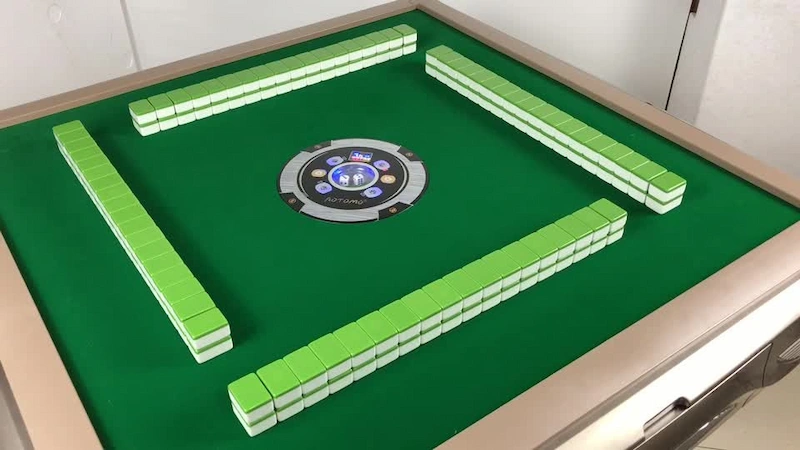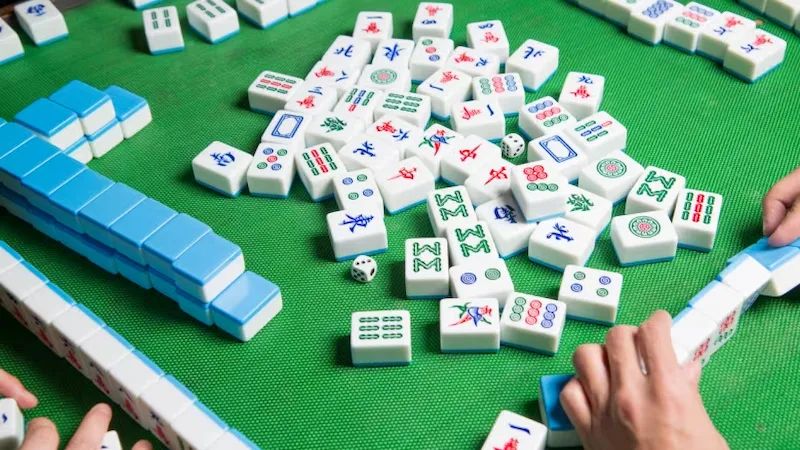If you are passionate about Chinese games, culture, or movies, you surely know about Mahjong. This is an extremely popular card game in China, widely embraced by many players. So, is Mahjong easy to play? What are the rules of Mahjong at 10JILI? Let’s learn how to play Mahjong through the following article.
General Introduction On How To Play Mahjong

Mahjong means “sparrow.” In Mahjong, the sparrow symbol represents the first card of the deck, which is the “One Bamboo.”
Mahjong is a game played with tiles made of horn, ivory, or plastic, usually involving four players. Players must use their strategies to win the game (also known as “winning”).
There is a hypothesis that Mahjong was created by a nobleman in Shanghai around the 1850s, some say between 1870-1875, and it started with paper cards.
Although it is a form of entertainment, it requires players to have a certain skill level. Additionally, crafting the tiles requires considerable effort and is naturally expensive.
Mahjong has many different playing styles, with the number of tiles varying by location and rules. In this article, we will explore how to play Mahjong in the Hong Kong style, as this is the basic how to play Mahjong, from which you can refer to other playing styles.
Mahjong Table
How to play Mahjong, a mahjong table is indispensable as an indispensable tool in this game. The Chinese Mahjong table is quite simple, with a square surface, each side about 80cm long and a height of about 60-85cm. When playing, people usually lay a cloth on the table to prevent the tiles from getting scratched.
In contrast, the Philippines Mahjong table is a more specialized tool, about 90cm high, also with a square surface, each side about 90-95cm long, and surrounded by a raised edge. This edge is 3-4cm high and covered with leather or felt. The table surface is lined with a smooth, hard material such as nylon or mica, usually in dark colors like blue or green to increase contrast, making the usually light-colored tiles stand out more.
The purpose of covering the table surface with a smooth, hard material is to prevent the tiles from falling off and to make it easier for them to slide across the table when shuffling. Over time, the table surface will inevitably get dirty, and its smoothness will diminish somewhat. At this point, a layer of powder is applied to the table surface to facilitate easier shuffling of the tiles.
Winning Conditions How To Play Mahjong

The goal of Mahjong players is to win. To achieve this, players need to arrange their tiles into 4 groups and 1 pair (completing the hand). Each player holds 13 tiles in their hand, plus the winning tile, making a total of 14 tiles.
How to Play Mahjong
Each Mahjong game consists of 4 rounds corresponding to the four winds: East, South, West, and North. One round completes one wind. The game starts with the East wind, beginning with the East Seat player. When the East wind rotates back to the original East Seat, it switches to the South wind.
The dealer starts with 14 tiles and discards the first tile. From there, each player will have 14 tiles per turn. Players will take turns discarding tiles until one player “wins”. The winning hand consists of 14 tiles divided into 4 sets and 1 pair:
- Pair: Two identical tiles.
- Pong: Three identical tiles. A Pong can be formed by drawing the tiles yourself or by claiming a discarded tile from another player.
- Chow: A sequence of three tiles in numerical order.
- Honor tiles: These can only form Pongs, not Chows.
- Kong: Three identical tiles in hand and a fourth tile drawn or claimed from a discard.
Priority Rules

Priority 1: The player who can use the discarded tile to win has the highest priority. If two or three players are waiting for the same tile to win, the player closest in turn to the discarder has priority. For example, if the East Seat discards, the South Seat has priority over the West and North Seats, the West Seat has priority over the North Seat, and so on.
Priority 2: The player who wants to use the tile to form a Pong or a Kong has the next priority.
Priority for Chow: This is only granted to the player directly after the discarder. For example, if the East Seat discards, only the South Seat can claim the tile to form a Chow. However, if the West or North Seats want to form a Pong or Kong, they have priority over forming a Chow.
These are the instructions and information about Mahjong game. The above content will help you become proficient and experienced in playing poker. Create a betting account and join our house today.
